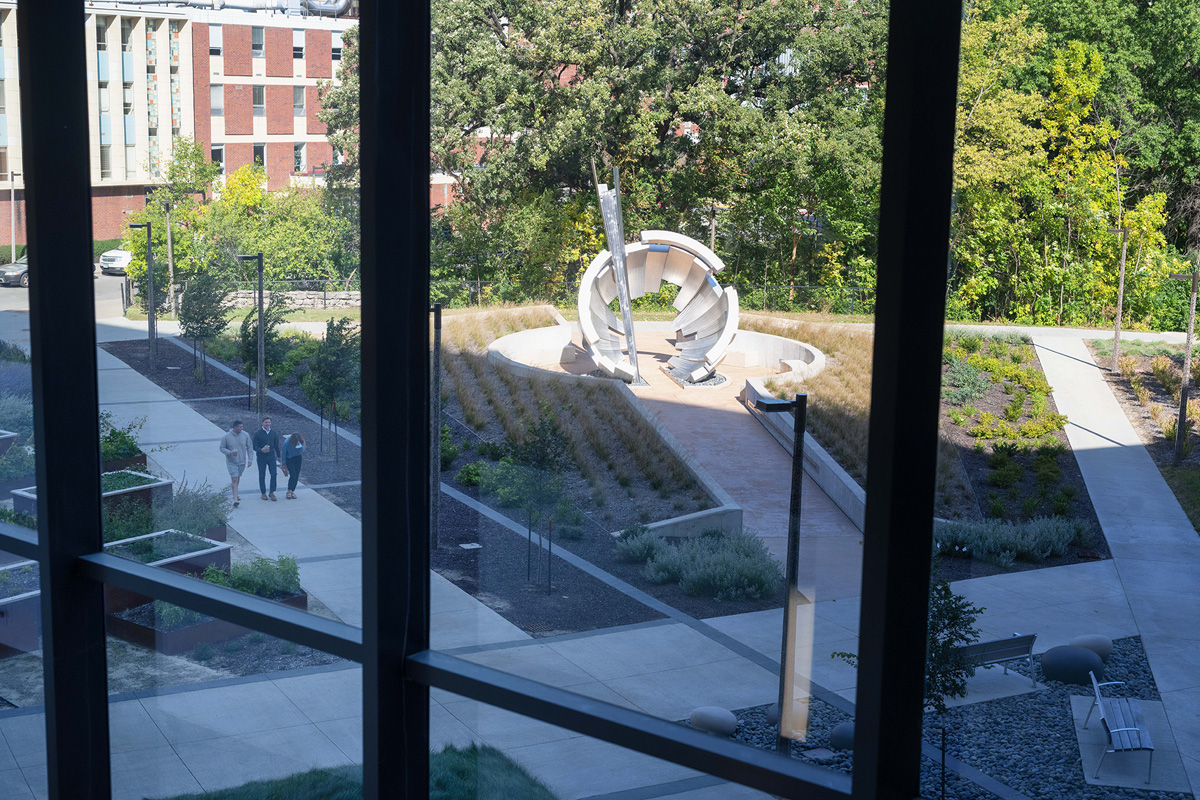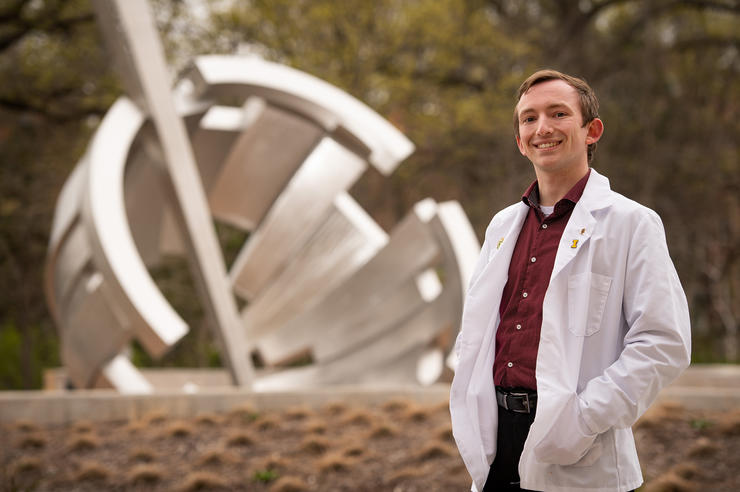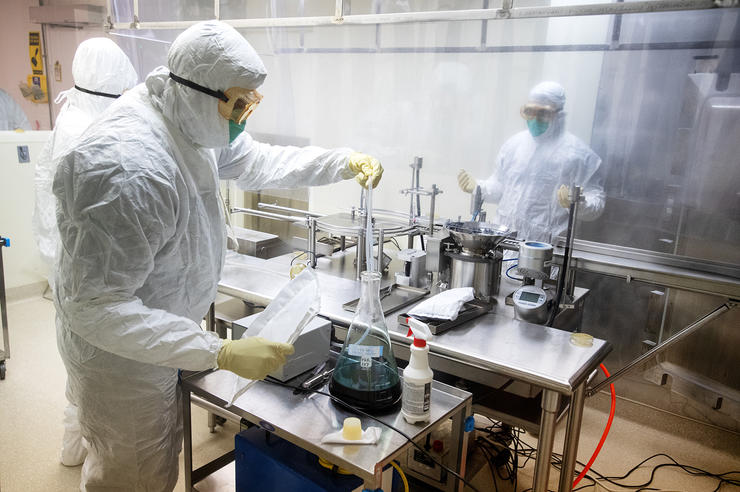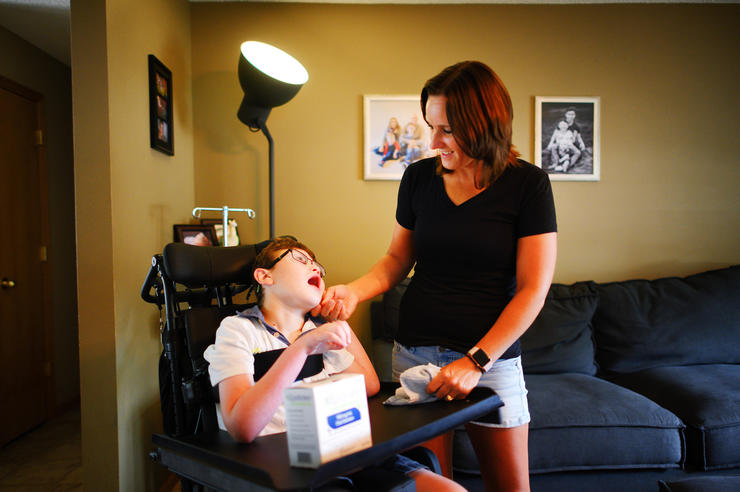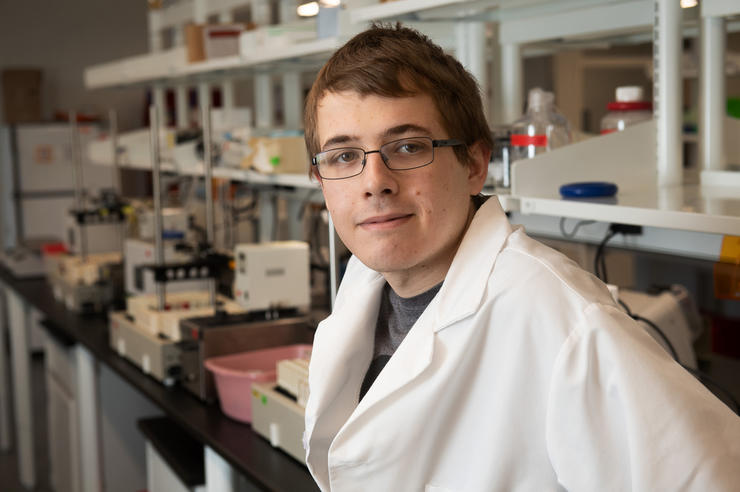Pharmacy’s space to educate, innovate, and congregate
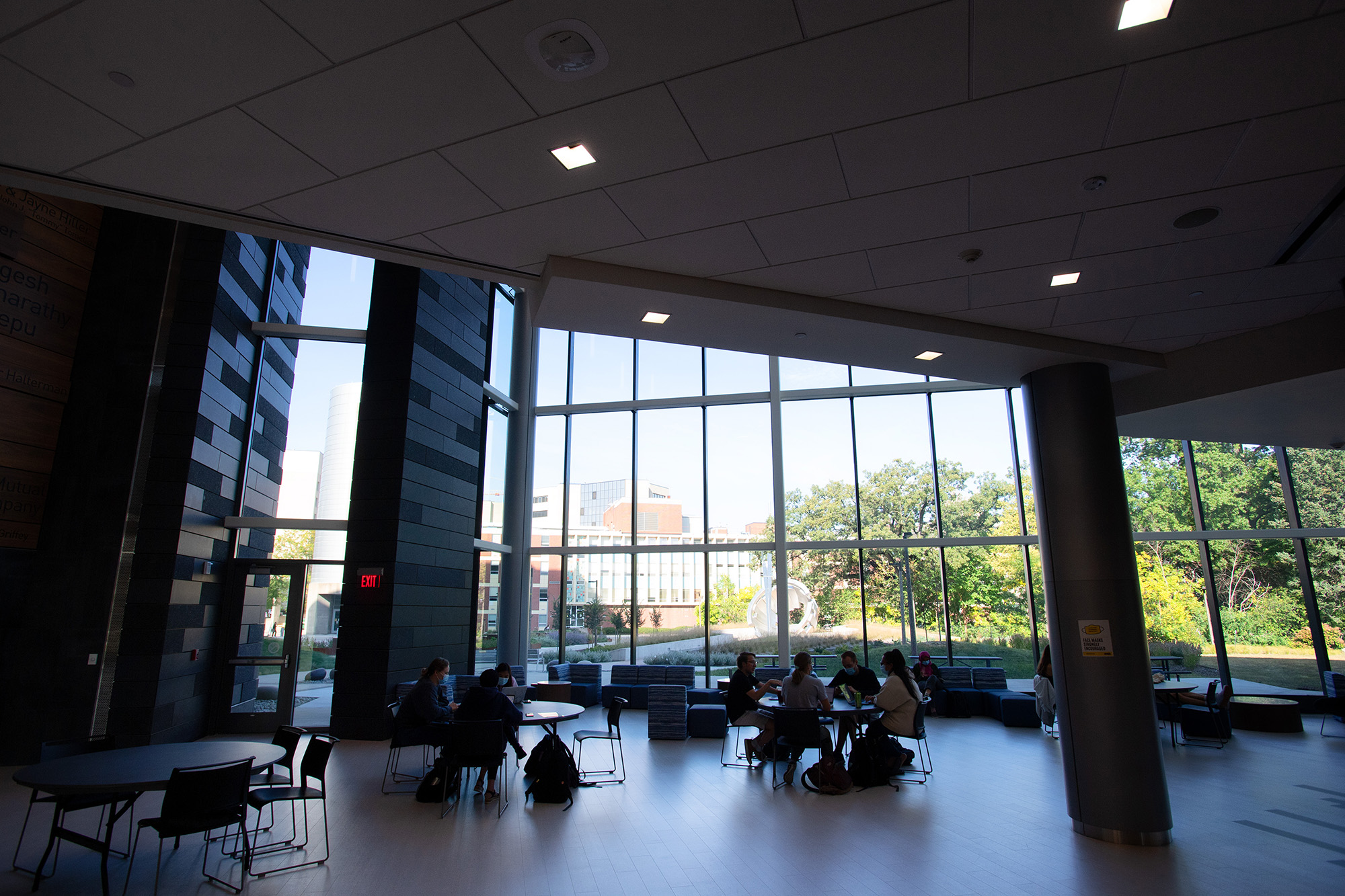
Like water and sun to a seed, the new UI College of Pharmacy Building is helping its community blossom.
After the COVID-19 pandemic interrupted the facility’s “soft opening” in early 2020, current and former students, staff, and faculty finally have been able to settle in and fully use the modern, world-class facility that sits between University of Iowa Hospitals & Clinics and Hillcrest Residence Hall.
“I’m excited to finally see students working, studying, and learning in our building, rather than previously seeing them leave after classes to find space in other buildings on campus,” says Susan Vos, associate dean of student affairs and clinical professor of pharmacy practice and science.
Without much fanfare, in January 2020, the College of Pharmacy Building had its “soft” opening for the spring semester. Students, faculty, and staff members had largely settled into offices and community areas, and the first-ever semester in the new facility was underway. The official building dedication ceremony—which finally will happen on Oct. 15, 2021—was initially planned for later in 2020.
But by spring break, the global COVID-19 pandemic prompted university leaders to shut down in-person classes and all but the most essential research activities that could not be moved online. The bustling halls, classrooms, offices, and student areas largely cleared out.
It wasn’t until fall 2021 that the building fully reopened to all in-person classes. Now, for the first time, the collegiate community has been able to consistently use the modern new space tailored especially to their needs.
Previous generations of students, staff members, and college friends now have a professional home with enough space to gather. Dean Donald Letendre says that causes the innovation Iowa is known for to further accelerate.
“We’re a college family, and that sense of community is at the heart of this new facility,” Letendre added.
More space, better suited to students’ needs
Speak with anyone in the College of Pharmacy about need, and one common word would emerge: space.
Fourth-year student Marissa Stewart recalls her biggest concern in years past: “Being able to have a desk while learning and taking exams.”
In the two old student auditoriums, Zopf A and B, students squeezed in elbow-to-elbow into old-fashioned seating with wooden writing tables whose desktops could be pulled up and folded down. The movie-theater-like floor sloped downward.
“What you had for a desk was the size of a giant piece of pizza—and I would pray I wasn’t sitting at a left-hand desk,” Stewart says. “Then you had to decide what to put on it: a paper or your laptop? You had to set your backpack on the floor or your lap, and your coffee on the floor, where you’d forget about it and kick it, and it’d roll and drip all the way to the front.
“You’d hear: ‘Liquid’s coming! Pull up your backpacks!’ and you’d be running to the bathroom to get paper towels while lecture was going on,” Stewart says.
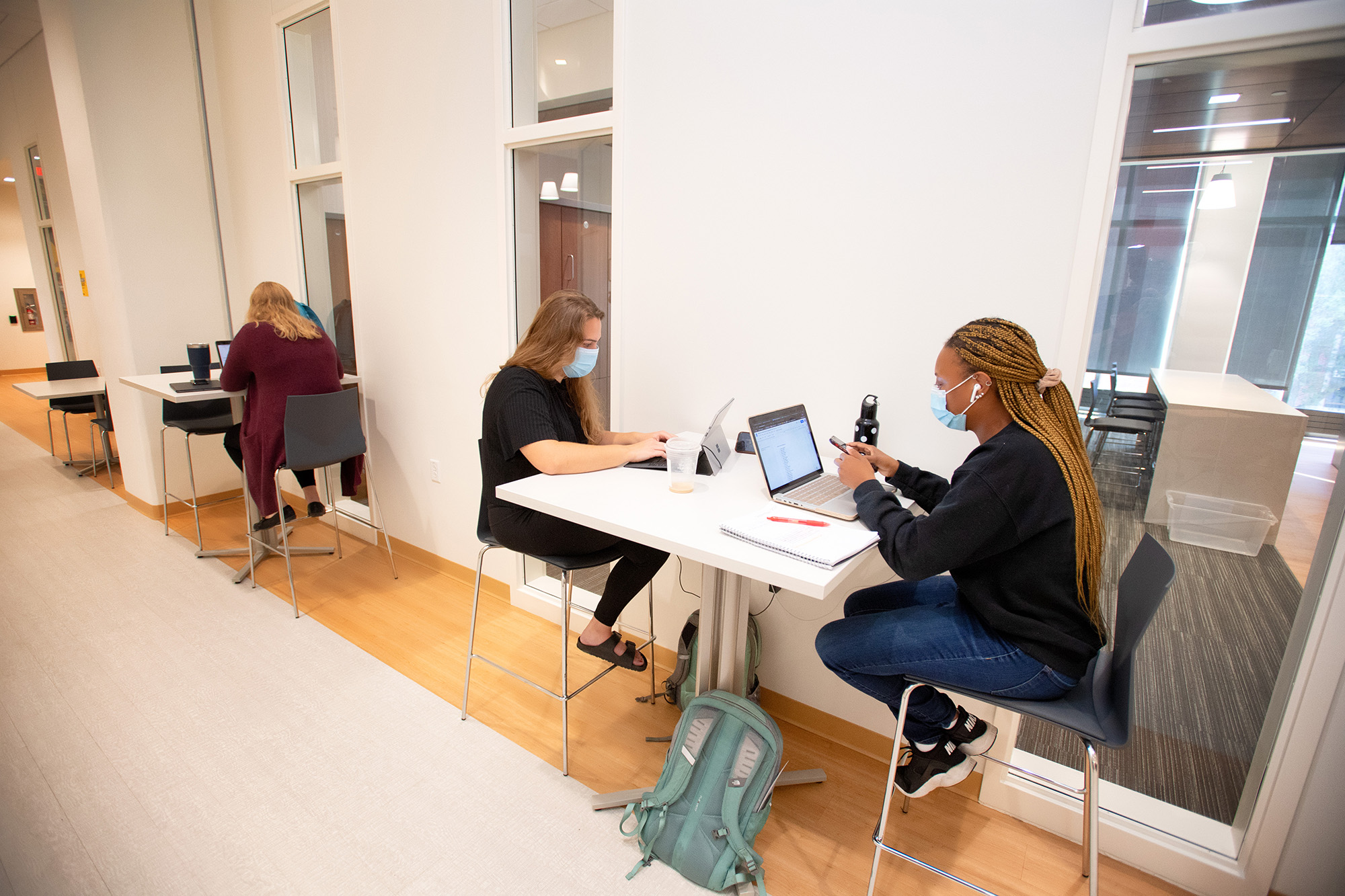
The UI College of Pharmacy will celebrate the completion of its new state-of-the-art building at 3 p.m. Friday, Oct. 15, in room 210 of the College of Pharmacy Building, 180 S. Grand Ave. (Spillover crowd may attend in room 110A/B.) Those unable to attend in person can view a livestream of the event.
The new building has more space, and it is better tailored to student needs.
In the pharmacy practice learning suite, students have specific areas to learn in small groups, practice giving injections, and work with mock patients behind the counter of a licensed community pharmacy with real medications. They practice counseling mock patients in individual rooms while being recorded for assessment and to see their own strengths and weaknesses.
There are also simulated hospital pharmacy areas, which host lessons on gowning and garbing before entering a clean room, sanitizing equipment, compounding medications, and breaking open glass medication vials that are sealed and protected from the air and contaminants.
The curriculum calls for active learning, and space is set aside specifically for it. There are 10 skills rooms, three 20-seat classrooms for small-group learning, as well as the model pharmacies. “These areas are designed for active learning and active assessment,” says Jeff Reist, clinical associate professor and director of the Pharmacy Practice Laboratory.
“We’ve gone from severe physical limitations to being one of the best facilities in the country. Our teaching has changed dramatically. We have a lot more capability to use lots of different creative strategies, and our assessments are a lot more meaningful for the students.”
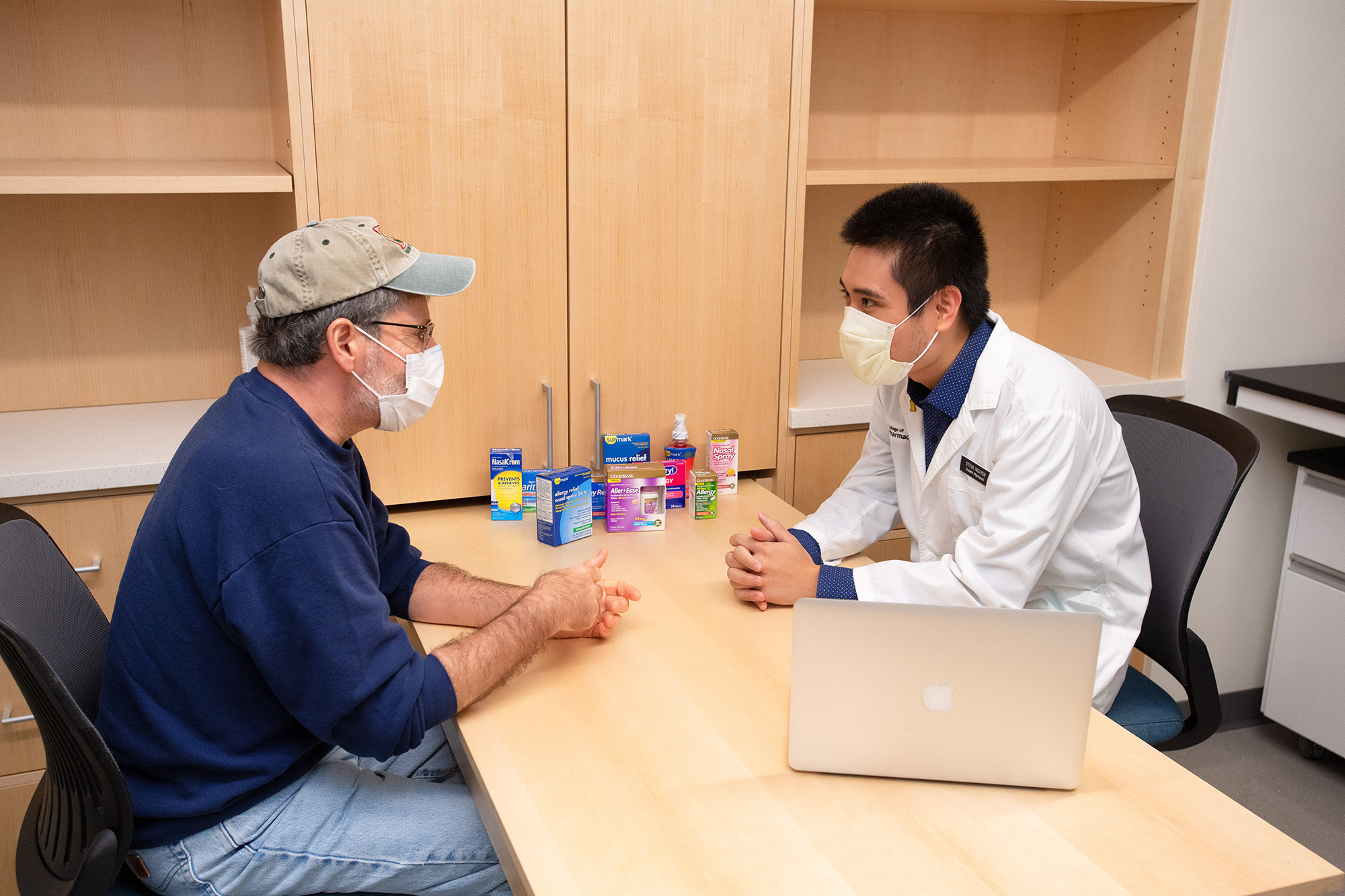
Reist says the goal is to have students ready to learn on their rotations. Like medical doctors in training, pharmacy students rotate through workplaces with working pharmacists to learn on the job while still in school.
“We’re going to be able to do a lot better job getting students rotation-ready,” Reist says. “These simulated spaces look just like where they’ll be learning to practice, with more space and a less chaotic learning environment. More learning can actually occur in this environment.”
In turn, students will be more ready on day one of each rotation to start learning with practitioners.
“They’re not just trying to figure out the environment,” Reist says. “And since they’ll be able to take the most advantage of the rotation, they’ll come out ready to help patients to the fullest extent possible.”
“We’ve gone from severe physical limitations to being one of the best facilities in the country. Our teaching has changed dramatically. We have a lot more capability to use lots of different creative strategies, and our assessments are a lot more meaningful for the students.”
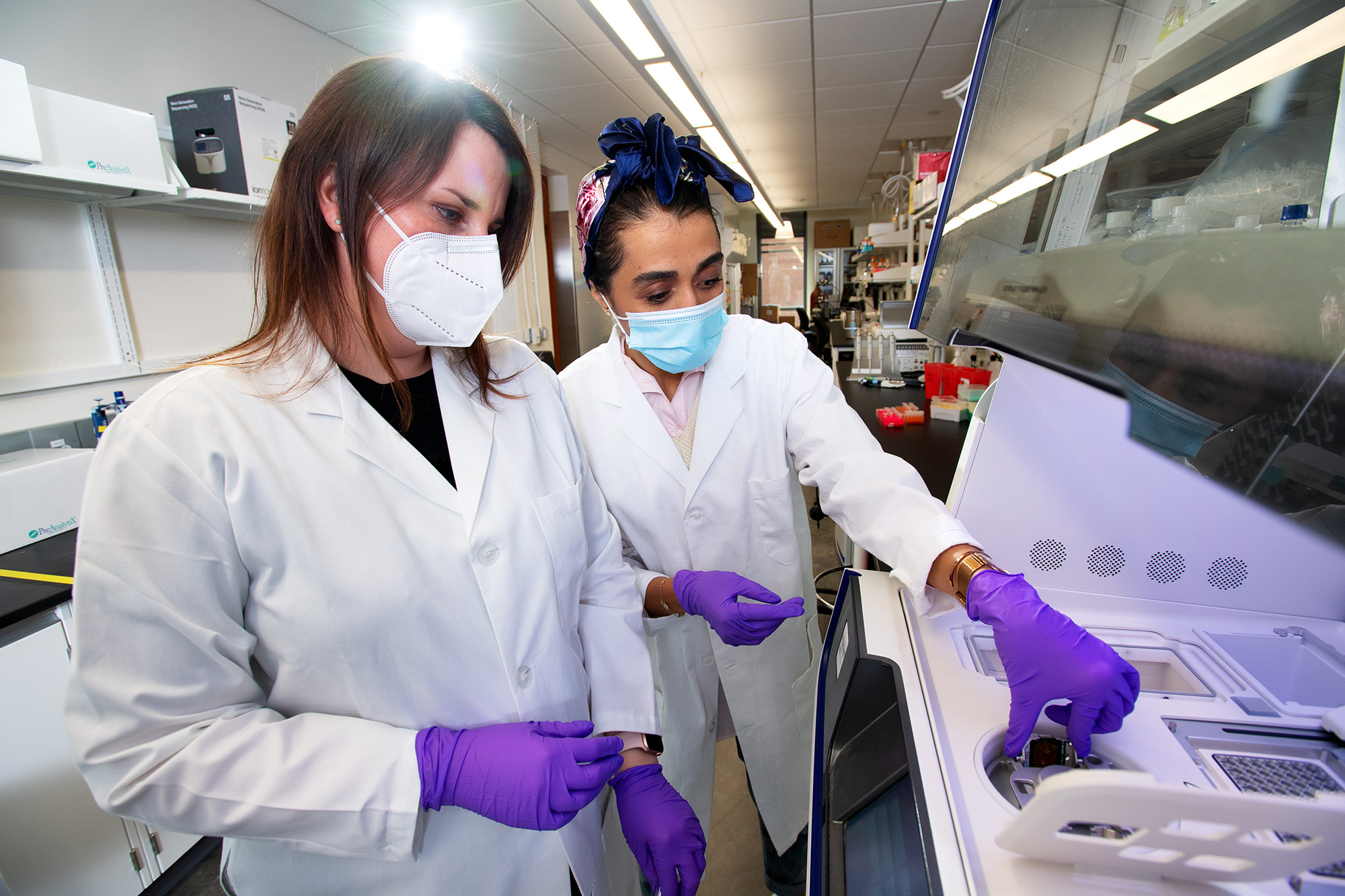
New setting a boon for research
Space also will allow the college’s research endeavor to grow. “We now have the capacity to expand our research enterprise by hiring greater numbers of successful faculty engaged in research,” says Dave Roman, professor and associate dean for research and graduate education. “That will translate to more research dollars coming into the college.”
Roman says the setup of labs and offices provides more opportunities for students and laboratory staff to interact and exchange ideas. “I can’t count the number of times I have walked into a graduate student office and seen someone analyzing some data, and just poked my nose in to ask, ‘What’s that?’” he says. “I do that whether it is one of my students or someone from another lab.”
The service division of the college that helps design, manufacture, and develop drugs for clients, University of Iowa Pharmaceuticals, is also on the cusp of benefiting from much more space. Recognized as an essential business, UI Pharmaceuticals has been fully operational throughout the pandemic.
Workers have been fine-tuning a complex new state-of-the-art sterile production facility in the lower level of the new building. In summer 2022, the first production batch is expected to roll off those production lines. Currently, the enterprise operates in what remains in use of the older pharmacy facilities on campus.
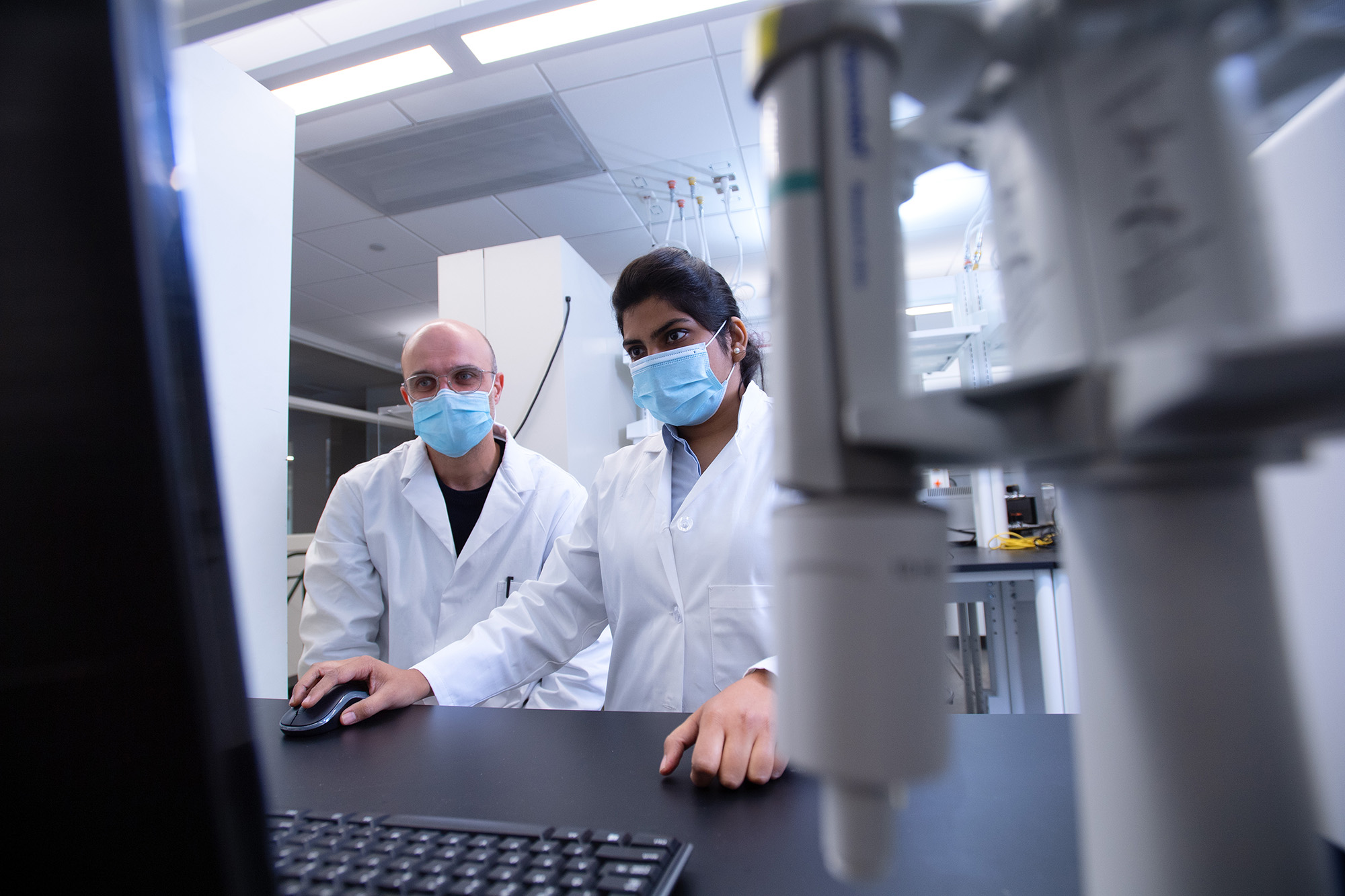
“The new facility will expand our capacity for sterile products five-fold from what we have right now,” says Dennis Erb, UI Pharmaceuticals managing director. That increase in scale will enable clients to continue their partnership with UI Pharmaceuticals further into their clinical development programs and in certain cases for commercial production. UI Pharmaceuticals also will continue making products in its current facility to support innovative biotechnology companies in their early stages of drug development.
To keep up with the demand for these services, it has been on an upward hiring trajectory. For years, staffing had stabilized at roughly 45 employees across all levels of UI Pharmaceuticals. With the current and projected growth of the enterprise, UI Pharmaceuticals has 83 full time staff and is projected to increase staffing to close to 100 employees by the end of next year.
Just as the new College of Pharmacy Building is helping its community blossom, the medicinal gardens and related sculpture of a mortar and pestle out the window serve as a reminder of the college’s roots.
“The juxtaposition of the ravine and pharmacologically active plant life in the medicinal gardens with the cutting-edge science and discovery that we have in our brand-new facility is brought together in the exploding mortar and pestle,” Letendre says. “The sculpture provides a symbolic gateway from past to present.”
